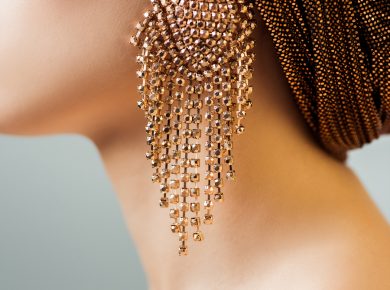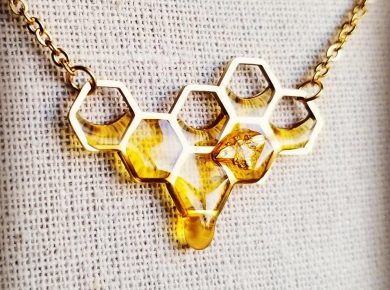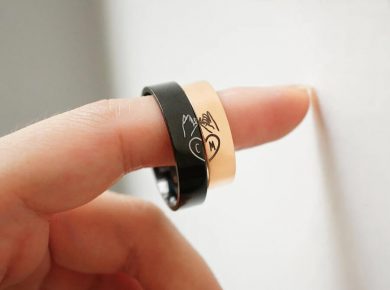
Karoline Healy, a visionary materials researcher and designer, has introduced a novel concept in the world of creative rings making with her latest creation – a ring featuring metals sourced through phytomining. This innovative technique makes use of hyperaccumulator plants that absorb metals from the soil, a method that Healy employed to create a one-of-a-kind piece for her jewelry brand, H2ERǴ.
Phytomining caught Healy’s attention while she was involved in a project aiming to find sustainable steel alternatives for consumer electronics. Her inspiration came from biogeochemist Antony Van Der Ent’s discovery of nickel hyperaccumulator plants in the Borneo jungle, as reported in New Scientist magazine. Healy was captivated by the image of plants that “bleed green nickel sap,” a crucial component for stainless steel alloys.

Driven by curiosity, Healy explored further into the interactions between biological organisms and metals. She learned about bacteria capable of extracting gold from waste circuit boards and a fungus in Australia that accumulates gold particles—findings that fueled her ongoing research project, Future Metals. This project represents her broader vision of sourcing precious metals through biological processes that are in harmony with natural ecosystems and capable of mitigating environmental waste.
The specific metals used in Healy’s H2ERǴ ring were sourced from the Miners Garden at Barnsley Main Colliery, a historical coal mining site in northern England, now repurposed as a garden for phytomining research. The UK-based biomining startup Phyona has partnered with Healy in this endeavor, cultivating gardens on polluted soils to not only clean the land but also to harvest metals from the flora grown there.

Phyona’s approach goes beyond traditional extraction methods. While initially relying on burning the plants and chemically processing the ash, the company has shifted towards developing more sustainable techniques, including organic and green chemistry approaches that avoid harmful substances. The ultimate goal is a fully bio-based method, which is currently in use for extracting the metals embedded in Healy’s jewelry.
The ring itself features a mix of silver, nickel, copper, and zinc, presented as metallic dust within a transparent sphere set into the ring. This design choice serves both aesthetic and practical purposes. Visually, it creates a direct connection to the origins of the materials in the Miners Garden. Practically, it reflects the ongoing development of metal processing techniques, which are still being refined.

Healy’s innovative use of phytomining speaks to a larger trend in the field of biodesign, where designers and researchers harness biological processes to create more sustainable and environmentally friendly products. From clothing dyed with bacterial pigments to furniture made with the help of mealworms, the integration of living systems into production processes is transforming industries.
Though phytomining may not replace traditional mining on a large scale, Healy sees significant potential for this method, especially as conventional metal reserves dwindle and become economically unfeasible to exploit with current technologies. In her view, phytomining offers a promising alternative that could supplement traditional mining methods, particularly in areas with specific types of metal contamination.

Currently, Healy’s ring is on display at a museum located on the Barnsley Main Colliery site, showcasing this blend of historical context, scientific innovation, and artistic expression. This exhibition not only highlights Healy’s creative use of emerging technologies but also serves as a beacon for the potential of phytomining to contribute to more sustainable practices in jewelry making and beyond.






